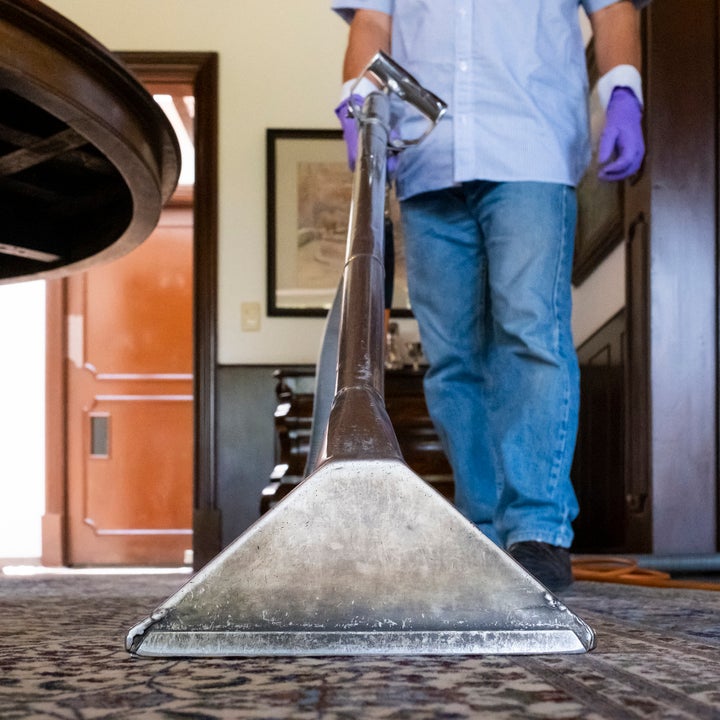Imagine this: you’re tackling a tough cleaning job. The kitchen floor is a sticky mess, and you’re determined to get it gleaming clean. You grab your trusty bleach, thinking it will do the trick. But then, a second bottle catches your eye: a brightly colored floor cleaner. You think, “Well, maybe combining them will be extra potent!” But hold on, friends. Before you reach for that mixing bottle, let’s chat about the dangers lurking inside that innocent-looking blend.

Image: learnmethods.com
Mixing bleach with any other cleaning product, including floor cleaners, can release harmful fumes and even create dangerous toxins. Trust us, this isn’t a cleaning hack, but a serious safety concern. This article dives deep into why this practice is so risky and offers actionable tips to keep you and your home safe. We’ll explore the science behind the dangers, uncover potential health risks, and provide alternative cleaning methods to achieve that pristine, sparkling floor without jeopardizing your well-being.
The Science Behind the Danger: Why Mixing Bleach and Floor Cleaner is a Bad Idea
The root of the problem lies in the chemical reactions that occur when these seemingly harmless cleaning products meet. Bleach, often sodium hypochlorite, is a powerful oxidizing agent, meaning it readily reacts with other substances, pulling electrons from them. Floor cleaners, on the other hand, contain a variety of chemicals, including ammonia (in some cases) and surfactants.
When bleach and floor cleaners mix, they engage in a vigorous chemical dance, creating unwanted byproducts. In particular, mixing bleach with ammonia generates chloramine gas, an incredibly irritating and potentially deadly substance.
Consequences of Mixing Bleach and Floor Cleaner
The repercussions of blending bleach and a floor cleaner can range from minor to serious, depending on the concentration of chemicals and the amount of mixing. Here are some of the potential consequences:
- Respiratory irritation: Chloramine gas causes coughing, wheezing, and shortness of breath, particularly in people with pre-existing respiratory conditions. These symptoms can manifest immediately or with a delayed onset.
- Eye irritation: The fumes can lead to irritation, stinging, and burning of the eyes.
- Skin irritation: Contact with the mixture can cause rashes, redness, and itching.
- Headache, nausea, and dizziness: Inhaling the resulting chemicals can lead to dizziness, nausea, and headaches.
- More serious conditions: In extreme cases, exposure to high levels of chloramine gas can even cause lung damage, loss of consciousness, and even death.
- Damage to surfaces: The combination can damage flooring, leading to discoloration or weakening of materials.
Beyond Floor Cleaner: Why Mixing Bleach with Other Products is Equally Dangerous
:max_bytes(150000):strip_icc()/frugal-mold-and-mildew-remover-for-tubs-and-tiles-1388734-03-8854077081bf48c49cc9ff9114626115.jpg)
Image: www.thesprucea.com
The Warning Signs: Identifying Products Not to Mix with Bleach
Bleach’s volatile nature makes it a risky partner in any cleaning scenario. It’s crucial to avoid mixing it with a wide range of products beyond floor cleaners. Memorize these warning signs:
- Ammonia-based products: This class of cleaning products includes glass cleaners, window cleaners, and some all-purpose cleaners. Mixing bleach with ammonia leads to the release of chloramine gas.
- Vinegar: While vinegar is a natural and effective cleaner, combining it with bleach creates chlorine gas, another highly toxic and irritating gas.
- Acids: Products like drain cleaners and toilet bowl cleaners contain strong acids. Combining these with bleach can create harmful chemical reactions.
- Hydrogen peroxide: Hydrogen peroxide, often used as a disinfectant, shouldn’t be mixed with bleach. This combination produces highly reactive chemicals that can pose significant health risks.
Safe Cleaning Strategies: Protect Yourself and Your Home
While the thought of mixing cleaning products might seem tempting for an extra “boost”, it’s a practice that should be avoided completely. Let’s embrace a safer approach to cleaning:
1. Embrace the Power of a Single-Ingredient Approach
When it comes to cleaning, simplicity is your best friend. Instead of combining multiple products, focus on using a single effective ingredient. For example, a baking soda paste effectively tackles grease and grime, while white vinegar is a safe and effective alternative for disinfecting surfaces.
2. Read the Labels: Understanding Chemical Combinations
Before combining any cleaning product, take a moment to read the labels carefully. Look for warnings regarding mixing with other substances. If you’re unsure about the compatibility of two products, err on the side of caution and don’t mix them.
3. Proper Ventilation: Preventing Chemical Buildup
Whether you’re using bleach or other cleaning agents, adequate ventilation is key to minimizing exposure to harmful fumes. Open windows and doors, and ensure proper airflow while cleaning. Avoid cleaning in enclosed spaces for extended periods.
4. Seek Expert Advice: Consult Professionals for Difficult Tasks
If confronted with a particularly challenging cleaning task, don’t hesitate to reach out to professional cleaners. They have the knowledge, resources, and safety precautions to tackle tough stains and sanitize effectively.
Can You Mix Bleach And Floor Cleaner
The Bottom Line: Choose Safety Over Shortcuts
While the allure of “super-cleaning” might be tempting, mixing bleach and floor cleaner is a dangerous shortcut that is never worth it. It’s essential to prioritize safety and avoid jeopardizing your health and wellbeing in the pursuit of a clean home. Be informed, follow safe cleaning practices, and choose alternatives for a healthy and happy home.






